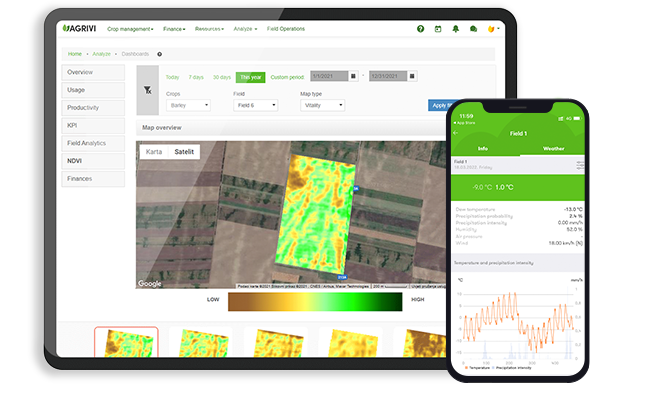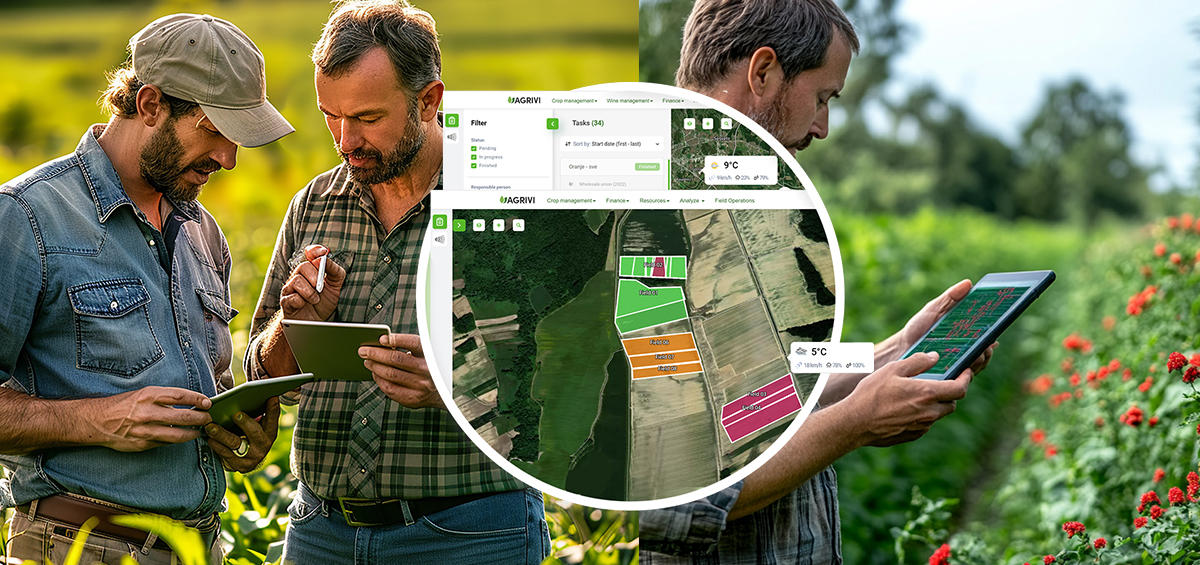The foundation of every successful farming operation begins with intelligent field management.
No matter what types of crops farmers or ranchers grow, their crop production and profitability depend upon the management practices that ultimately start with understanding and optimizing their field management. Field management is critical no matter how many acres of land a farm is or the crops planted. It is equally vital for a row-crop farmer growing commodity crops like soybeans, corn or wheat, a livestock farmer raising dairy cows, hogs or turkeys, or specialty crop growers producing fresh-market vegetables or fruit.
Table of Contents
Why is Field Service Management Important to the Agricultural Sector?
Field service operations and service management solutions are standard terms in industries outside of agriculture like healthcare, communications and construction.
Field service in these sectors refers to jobs performed away from the operational headquarters and out in the field. So, this might mean dispatching employees or field workers to fix a phone or wireless service. Or sending home health nurses to check on a patient in their home. The field service landscape is proliferating as providers work to meet customer expectations by employing a mobile workforce and sending field technicians directly to where the projects are.
In the agriculture industry field, service management is a very literal application. Farmers manage their fields, aka field management, as the vital component in producing agricultural commodities. Every decision on a farm or ranch flows from how the operator organizes, manages and maintains their agricultural land — e.g. field management.
Is a 100-acre farm managed into just one 100-acre field? Or is it broken into multiple smaller areas, following soil types, natural geography or some other factor important to the farmer’s goals? What sort of agricultural products is the farmer planning to produce? Commodity crops such as soybeans are typically only profitable when planted in large tracts. They are a low-price but high-volume crop typically with low margins but relatively low costs per field. Versus intensive agricultural production models such as orchards or berries are usually grown on a smaller scale, with higher costs and higher prices for their crop production.
Ranchers and livestock operators have a different set of factors to consider regarding field management, such as the impact of herding their grazing animals across agricultural fields and their animal husbandry practices on pasture quality. Ranchers, dairy farmers and hog farmers may need to set aside cropland for crops like silage, hay or grain crops to feed their animals when pasture isn’t enough. And they will need to closely manage their land use and the impact of livestock on soil health and water systems to meet the requirements of conservationists and sustainability goals.
Field management is how farmers optimize their most crucial natural resource– land – to meet operational goals. Modern farmers are utilizing the IoT (Internet of Things), agricultural technology, mobile devices, mobile apps and field service management software to automate and optimize their field management to increase productivity and streamline their sustainability efforts.
How Yield Maps Depend Upon Field Management to Increase Crop Yields
One good example of how field management is the foundation of the precision farming revolution is the adoption of yield monitors on combines and yield maps.
Yield monitors collect data such as the volume of grain harvested and the moisture level of the crop linked to specific geographic points in the field as calibrated by GPS technology. Before beginning harvest, the farmer inputs the geographic boundaries of the field they are harvesting. The collected yield information is overlaid with other critical field management data, such as soil types, fertility, moisture and seeding rates.
Using farm software management tools, the farmer then uses precision data analytics to understand their crop yield data versus the other project management decisions they made throughout the current season. Armed with this data, they make informed practice decisions to support a more profitable operation.
A study by the United States Department of Agriculture (USDA) looked at the adoption of yield and soil mapping technology in combination with other precision field management practices such as guidance and auto-steering during planting and field cultivation and VRT (variable rate technology) for seeding and applying inputs amongst U.S. farmers. Their study of Pennsylvania corn producers of an average farm size found an increase in net returns by 4.6 percent when these technologies, which are all dependent upon effective field management, were utilized.

Field Management
6 Field Farm Facts Every Farmer Should Have at Their Fingertips
When making daily practice decisions, there are crucial field management facts that every farmer should always know or have easy access to regarding land use. Software designed specifically to meet farmer’s management needs, like AGRIVI’s farm management software, helps farmers keep track of and analyze their field management data.
1) The Exact Field Location
The exact field location is the first crucial piece of data a farmer needs for field management.
Knowing the exact field location (field coordinates) and field boundaries enables precision farming technologies, such as weather tracking or satellite imagery. Successful farmers, oriented toward intelligent field management, track things like weather conditions and pest and disease pressure based on the coordinates of their fields. This allows them to respond in real-time to seasonal events that may hurt their end-of-season yields.
For instance, satellite imagery can calculate the current growth rate of a crop and identify areas that may need additional fertilizer to support optimal crop yields.
Also, the exact field location is essential to finding a field and dispatching field workers from the back office to the correct location. Especially for farms managing many thousands of acres, it can be confusing to try and find a specific field during busy times such as harvest. Knowing and sharing an exact field location with field workers and harvest operators helps streamline work orders and optimize workforce management.
2) Field Size
Field size is a piece of obvious but equally important information for field management.
One of the main reasons is that the size of the field may dictate which crops can be grown in the field. For instance, as already discussed, orchards are usually planted in smaller parcels, while arable crops like corn or soy typically cover a larger land area. So, suppose a farmer has a smaller acreage field determined by geographic factors such as specific soil types or perhaps a road or waterway boundaries. In that case, they will likely make different crop production decisions for that field than they would a larger acreage field.
Field size is also crucial data to support other field management decisions. Such as how much fertilizer is needed for that specific field (dependent upon size, the crop planted and nutrient requirements). Or, what kind of irrigation system would be appropriate for that field based upon the size of the field?
3) Field Utilization
Besides field location and size, the utilization of a field (what the field is planted to) is essential information to every farm manager.
Knowing what fields they have planted into what crops and how many acres in total helps farmers manage their inventory regarding potential harvests they may need to warehouse and store before selling and invoicing. Also, field utilization is another critical piece of information for field workers and ensures efficient workflows. For instance, specialty crop farmers often calculate how many temporary field hands they hire based on how many acres they have planted for specific crops.
4) Field Fertilization History
Fertilization per field is another crucial data point in field management. Knowing what inputs were applied to a field gives farmers a historical analysis of the productivity of a field and allows them to make better management decisions amid seasonal production.
For instance, nitrogen is critical to crop production but tends to move through the soil critically. So, suppose a farmer applies more nitrogen than their crop takes up during its growth cycles. In that case, that extra nitrogen will erode into nearby waterways, negatively impacting a farmer’s sustainability goals and contributing to climate change (nitrogen fertilizer releases nitrous oxide, a greenhouse gas). Plus, they spent more on nitrogen than they truly needed. But if farmers keep good field records of their input applications, they can fine-tune their application rates by comparing how much nitrogen they spread on a field at the beginning of the season to what was left after harvest.
5) Crop Rotation by Field
Farmers who practice intelligent field management always know which crops are grown in their fields during the last few years. That way, they can easily plan the crops that will be planted in the future.
For instance, most U.S. commodity crop farmers will rotate their fields between crops, such as corn following soybeans, to break up pest and disease cycles and optimize fertilizer regimes. And some crops, such as onion species, may harbor destructive soil-borne diseases that can persist in the soil for many years. Therefore, farmers must know what is growing in their field for the current year and have a history of crops planted for many years.
6) Field pH Value, Soil Type and Soil Tests
The most important facts about every field are its soil type and pH value.
Soil type determines which crops can be grown in a specific field. Some crops prefer clay, while others are more appropriate for sandy soils. Moreover, soil type will also determine water management on the field. For instance, due to its high porosity, sandy soil requires frequent irrigation with smaller amounts of water.
Meanwhile, pH is very important to successful crop production. A farmer may decide to plant a crop to match a field’s native soil pH, like planting an acid-loving crop like blueberries in a field with a low pH factor. Or, the farmer may decide to apply inputs to either lower or raise the pH of their soil to best suit the needs of the crop they plant to grow there.
Together with soil type, successful farmers who practice intelligent field management manage their crop production based on the results of soil tests which will include crucial information like the fields pH value and nutrient levels. This directly impacts a farmer’s nutrient practice decisions at the field management level.
Why Field Management is Best Done Using Farm Management Software?
There is a vast amount of data filtered through the field management lens. For busy farmers, it becomes difficult, if not impossible, for a farmer to keep track of their field data without the help of data analytics and field management software.
Intelligent field management through AGRIVI farm management software is recognized by farmers worldwide as one of the top farm management solutions on the market. Farmers who use AGRIVI never miss a single detail about their fields and crop productions. From real-time weather data, fertilization status, satellite imagery and crop rotation history – AGRIVI covers all the features that any farm manager needs to know.





